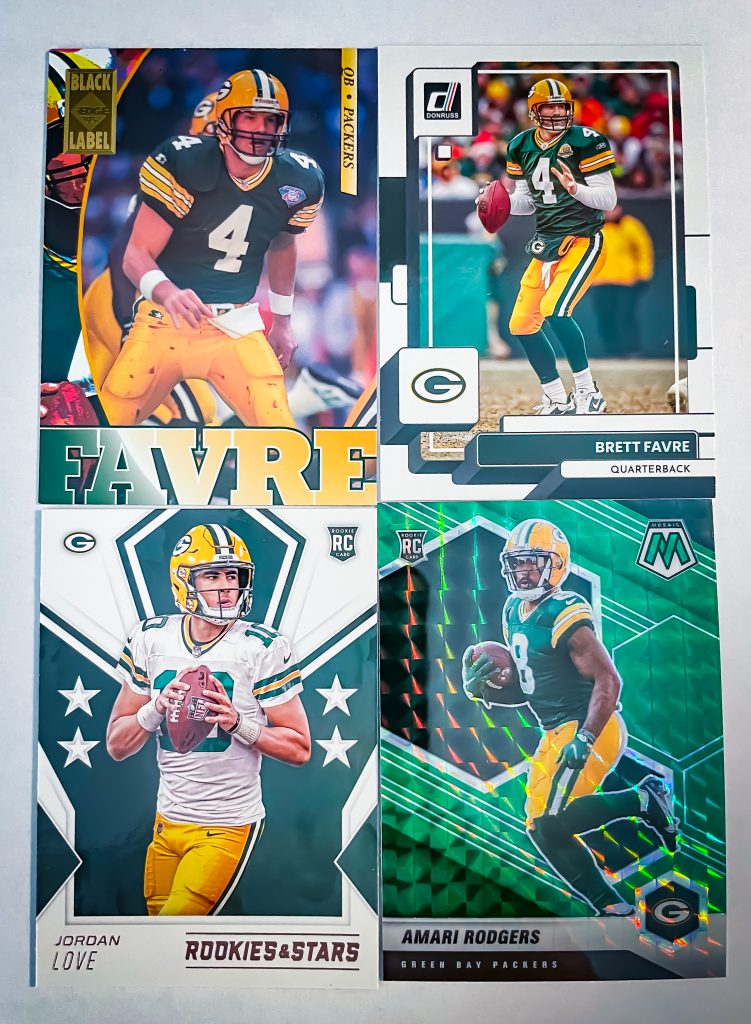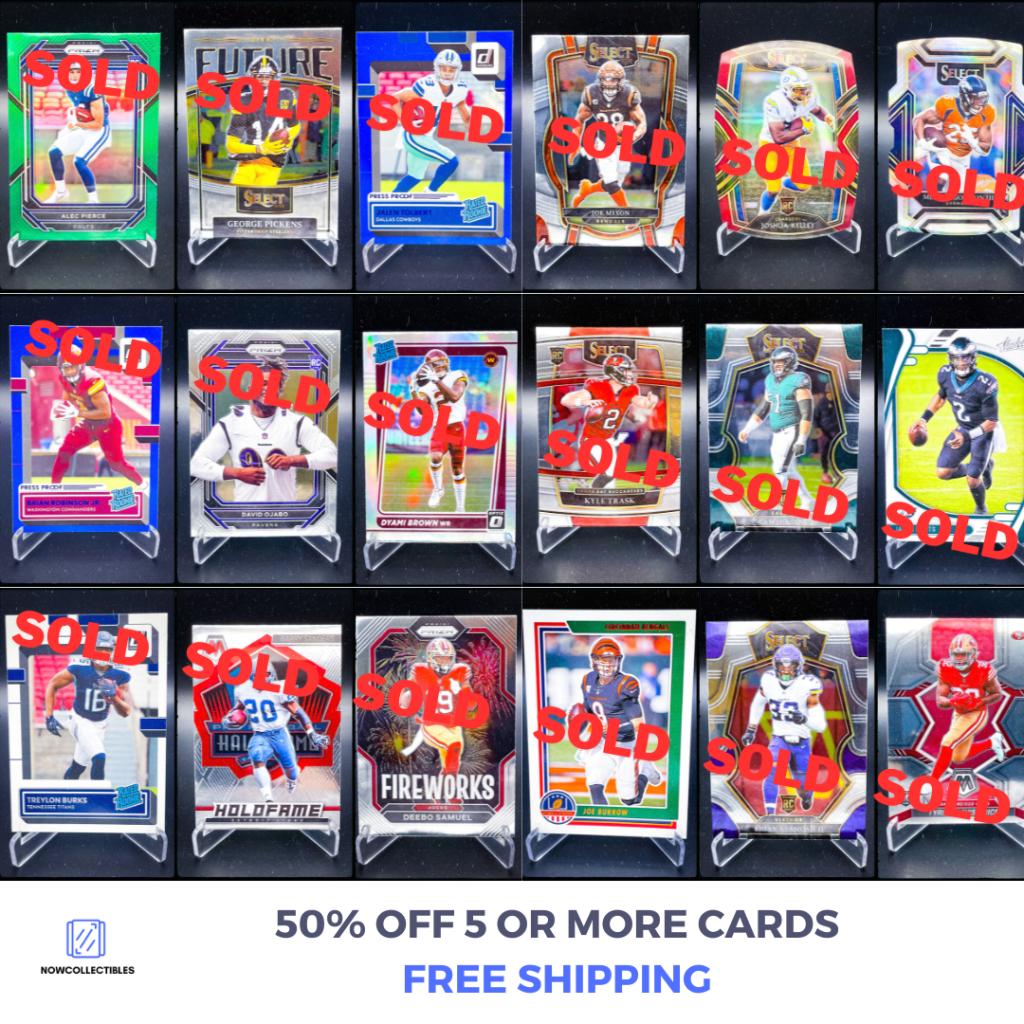Learning what it takes to earn an ROI from your sports card collection doesn’t have to be complicated.
Some folks use sports cards as an alternative investment, like buying art or other items. However, as Sports card collecting has evolved from a hobby into a potential investment opportunity with the possibility of generating a return on investment (ROI), it’s essential to learn the basics.
This article will delve into the concept of ROI in sports cards and strategies to increase your chances of earning a positive ROI in the sports card market. What does it take to earn from selling sports cards and to be profitable, what are the steps to getting started, and what can you expect?
Let’s start with the basics:
What Is the ROI of Sports Cards?
Sports card collecting has evolved from a hobby into a potential investment opportunity with the possibility of generating a return on investment (ROI). This article will delve into the concept of ROI in sports cards and strategies to increase your chances of earning a positive ROI in the sports card market.
How Is ROI Calculated for Sports Cards?
Calculating ROI for sports cards is relatively straightforward. The formula for ROI in this context is:
ROI (%) = [(Selling Price – Purchase Price) / Purchase Price] x 100
This formula will give you the ROI as a percentage, allowing you to assess the profitability of your sports card investments. Always check the number before listing or purchasing a bunch of cards. It helps you stay financially steady and consistent in your life.
Life can get complicated when the hobby becomes too risky or damaging to your personal life. Collecting and selling sports cards is supposed to help enhance your lifestyle, not make it worse. Becoming addicted to ripping sports cards in your car doesn’t help if you have bills to pay. So be responsible and respectful as everyone has different budgets.
We hope this article helps you get a better idea of what a positive ROI on sports cards can look like and what steps you can take to earn it.
Use the eBay calculator to help you understand the fees and tax implications when you sell directly on their platform.
US eBay Fee Calculator | Updated on Jun 20, 2023 (ebayfeescalculator.com) – if you charge for shipping, it helps improve your profitability. However, that can impact the number of sales you get since most consumers now expect free shipping, primarily due to how Amazon has changed the world.
Or you can use our ROI Sports Card Calculator to help you calculate this on your own!
How to Earn an ROI?
ROI, or Return on Investment, in the context of sports cards refers to the profit or gain that collectors or investors can achieve by buying and selling sports card products. The goal is to purchase sports cards and related items at a lower cost and then sell them for a higher price, making a profit.
There are multiple situations; however, the most common is when you buy wax and look for a way to profit from it. You can either rip the packs to sell the cards individually as singles. Or you can hold onto the unopened pack, which can change in value.
It’s tricky because blaster box prices can change constantly, especially during a recession or when times are good. However, for those examples, the box price is only $49.99. It’s a popular and high-demand product.
Yet, most blaster boxes are elsewhere to produce an ROI. It’s more for entertainment and fun than anything else.
These boxes focus on giving you specific types of cards like ‘hits’ which can be worth a lot of money. However, only some get the rare and valuable cards. While every blaster gives a list of guaranteed cards, the value might not exist.
Instead, it would help if you did some things to get a positive ROI.
1. Sell the Hits at the Peak
As the saying goes, ‘Sell through the hype’. Every football season, there’s a lot of hype in selling rookie quarterbacks who aren’t proven. We see this with C.J. Stroud’s cards; while he’s breaking records as a rookie during the 2023 season, he’s still unproven, and an injury can take him out quickly. Here are a few examples of rookie quarterbacks who were experiencing high card values until things went wrong:
Trey Lance: His cards were in the thousands until he had a leg injury, which put his season to an end. The following season, he was in a Quarterback battle position to find himself being the third-string quarterback for the San Francisco 49ers. Since that didn’t end well for him, he was later in a trade to the Dallas Cowboys. His rookie cards with the San Francisco 49ers uniform significantly dropped in value. They are selling less or less fast now. He’s hardly talked about in the league as well since experiencing this injury.
Mac Jones: After having a rough rookie season, he only performed worse, and his card values continue to drop from record highs. He’s not having a good time in the patriot’s system and play calls, adding to the frustration for both him and the fans.
Sometimes, the prospects who were all-stars in college translate to something other than the professional league of the NFL. There are different rules, different skills, and different coaching styles. It’s all different and depends on who can handle the pressure.
With that being said, if you were stuck holding onto Trey Lance or Mac Jones cards, they wouldn’t be worth much any more years later. However, everyone was buying into them for thousands. It’s a safer bet to go after the ghosts who have proven themselves and have the franchise tag. Examples include Patrick Mahomes, Justin Herbert, Jalen Hurts and others.
To get the most ROI out of your blaster box sports cards, you want to find the goats who have a proven track record and the rookies who are currently in high demand and sell them immediately.
2. Create Card Bundles

For players or teams, you don’t personally collect, it’s wise to bundle them into lots. When you sell multiple cards at once, they can look more attractive to collectors. It’s because they can buy each card for a cheap and affordable price. For example, if I have a team like the Los Angeles Rams, who haven’t won a Super Bowl in multiple years, those cards are only worth a little.
Instead, put together a lot of multiple cards like 5, 10, 15 of them. Then, when a fan of that team comes around, they’ll be more interested because they can see more of their favorite players from their favorite team.
Decide how many cards you want to lot from the packs you rip, and then start listing one at a time. It’ll take some effort; however, it’ll work out if you put in the time and bundle commons together. Our eBay store has a lot of affordable cards lots and single cards available:
3. Diversify Your Collection:
To minimize risk and increase your chances of a positive ROI:
- Diversify your sports card collection.
- Only put some of your resources into a single player, team, or card type.
- Spread your investments across various sports, players, and card genres to reduce the impact of poor performers on your overall portfolio.
Here’s a list of famous players (baseball and football) you can consider adding to your portfolio (collection) for example:
Homerun Hitters
- Aaron Judge
- Shohei Ohtani
- Mookie Betts
- Bryce Hyper
Hall of Famers
- Bo Jackson
- Steve Young
- Jerry Rice
- Barry Sanders
- Brett Favre
Up and coming.
- CJ Stroud
- Bryce Young
Goats
- Tom Brady
- Patrick Mahomes
- Justin Herbert
- Jalen Hurts
4. Stay Informed About Market Trends:
The sports card market is dynamic because of various factors, such as player performance, team success, and collector trends.
Regularly follow sports news, card market updates, and online forums to stay informed about changes in player values and collector preferences. Knowing market trends can help you make informed decisions and seize profitable opportunities.
One of the best ways to keep track of which players have the best sports card ROI is by looking at apps. For example, the NFL Fantasy League app has percentages and active rosters you can use to know more about specific players and who’s worth buying to sell.
5. Consider Long-Term Investment Strategies:
While some collectors focus on short-term gains, others adopt a long-term investment approach. Long-term strategies involve holding onto cards for several years, hoping that the player’s career and market demand will increase their card’s value. This approach may require patience, but it can lead to substantial ROI if the player or team becomes more successful over time.
For example, Mathew Stafford, the quarterback for the Rams, is a player who was once in the Super Bowl and won. However, with his performance in recent years, his card values have dropped significantly. In that case, selling in the short term would make the most sense and work well.
Yet, not all situations happen to work out like this. Instead, a player like Patrick Mahomes, if you have his rookie cards, they are worth a ton and continue to climb in price. If he gets his 4th Super Bowl win, they’ll continue to go up. Knowing which player to invest in helps with getting ROI from sports cards.
Why Getting ROI From Sports Cards Is Easier Than You Think
While sports cards have a high cost to acquire and they are less lucrative than other alternative investments, they still make for an entertaining hobby.
In short, sports card collecting has transformed from a simple hobby into a viable investment opportunity. Achieving a positive Return on Investment (ROI) in this market involves a combination of strategies and careful decision-making.
We outlined essential principles, such as calculating ROI, selling cards at the right time, bundling cards for attractive sales, diversifying your collection, staying informed about market trends, and considering short-term and long-term investment approaches.
The profit potential exists in the sports card market; it’s crucial to approach it with responsibility and awareness.
The world of sports and collecting is ever-changing, with player performances and market trends influencing card values. By following these guidelines and staying informed, collectors and investors can enhance their chances of achieving a successful ROI in their sports card investments.
Remember that responsible investment and adaptation to market shifts are crucial to making the most of your sports card collection. Whether you’re a seasoned collector or just starting, these insights should help you navigate the evolving landscape of sports card collecting and make informed decisions to optimize investment returns.
If you enjoyed reading this article, you may also like:
- Learn how to use our ROI Sports Card Calculator
- Buying Raw vs. Graded Cards: Which is Best for Collectors?
- How to Sell Sports Cards on Online (2023)
Sports card hobby enthusiast (originally from New York) who can’t resist ripping cards and eating donuts on the weekends. Passionate about all collecting, have been collecting football cards and other memorabilia for half a decade. Enjoys going to card shows, visiting card shops and getting to know other collectors. Owner of NOWCollectibles a collectible e-commerce business – online card shop for buying affordable cards helping connect sports fans with their favorite teams and players. Follow my personal IG to see PC: @NowCollects See my latest articles here: NowCollectibles Articles (thinksportscards.com)
